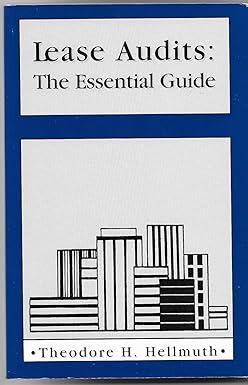Answered step by step
Verified Expert Solution
Question
1 Approved Answer
SPEEDWAY MOTORSPORTS, INC. Comparative Income Statement (in thousands of dollars) Year 2 Year 1 Revenues: Admissions ..................................... $175,208 30.9% $177,352 32.6% Event-related revenue .................... 183,404
SPEEDWAY MOTORSPORTS, INC. Comparative Income Statement (in thousands of dollars) Year 2 Year 1 Revenues: Admissions ..................................... $175,208 30.9% $177,352 32.6% Event-related revenue .................... 183,404 32.3 168,359 30.9 NASCAR broadcasting revenue .... 162,715 28.7 140,956 25.9 Other operating revenue ................ 46,038 8.1 57,401 10.6 Total revenue ............................. $567,365 100.0% $544,068 100.0% Expenses and other: Direct expense of events................ $ 95,990 16.9% $ 97,042 17.8% NASCAR purse and sanction fees. 105,826 18.7 96,306 17.7 Other direct expenses .................... 113,141 19.9 102,535 18.8 General and administrative............ 78,070 13.8 73,281 13.5 Total expenses and other ......... $393,027 69.3% $369,164 67.8% Income from continuing operations.$174,338 30.7% $174,904 32.2% b. While overall revenue increased some between the two years, the overall mix of revenue sources did change somewhat. The NASCAR broadcasting revenue increased as a percent of total revenue by 2.8 percent, while the percent of admissions revenue to total revenue decreased by 1.7 percent. The total expenses as a percent of total revenue increased by 1.5 percent which resulted in income from continuing operations as a percent of revenue decreasing by 1.5 percent, which is a slightly unfavorable trend. However, the income from continuing operations as a percent of revenues exceeds 30% in both years, which is excellent. Apparently, owning and operating motor speedways is a business that produces high operating profit margins. 1. Working capital: - = Calculated Ratio Numerator Denominator Value 2. Current ratio = 3. Quick ratio = 4. Accounts receivable turnover = 5. Number of days' sales in receivables = 6. Inventory turnover = 7. Number of days' sales in inventory = 8. Ratio of fixed assets to long-term liabilities = 9. Ratio of liabilities to stockholders' equity = 10. Number of times interest charges earned = 11. Number of times preferred dividends earned = 12. Ratio of net sales to assets = 13. Rate earned on total assets = 14. Rate earned on stockholders' equity = 15. Rate earned on common stockholders' equity = 16. Earnings per share on common stock = 17. Price-earnings ratio = 18. Dividends per share of common stock = 19. Dividend yield =
Step by Step Solution
There are 3 Steps involved in it
Step: 1

Get Instant Access to Expert-Tailored Solutions
See step-by-step solutions with expert insights and AI powered tools for academic success
Step: 2

Step: 3

Ace Your Homework with AI
Get the answers you need in no time with our AI-driven, step-by-step assistance
Get Started


